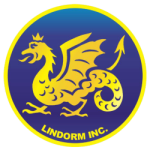Sediment Monitoring Instruments
SediMeters
SediMeter™ SM5
With extended length and the capacity to measure also above water, day and night, this opens up new possibilities such as tidal zones, sand dunes, and snow accumulation.
SM5A Base Version
This features a single PCB with 48 OBS detectors, inside a thick-walled 20-mm diameter PCB tube.
SM5A-kit
The SM5A together with a strong storage and transportation case, a USB cable, a brass tip and a stainless steel tube for pushing it down into the sediments.
SediMeter™ SM4 rev. 2
A truly multi-purpose sediment monitoring instrument that now also features sediment profiling functionality.
SediMeter™ SM4
SM4 Traditional Version
The SM4 rev. 2 is the original form factor, in that the instrument is inserted into a holder tube that is screwed down into the sediments.
SM4P SediSond™ Version
SM4-kit
Obsolete SediMeter™ models
SediTrans™
A combined turbidity / current velocity / current direction / pressure instrument.
Nilsson Depth-Integrating Suspended Sediment Sampler
This is the original UNGI Report (Uppsala Naturgeografiska Institution) in which the development of the sample was described by Bengt Nilsson, PhD. This sampler was developed in the framework of the International Hydrological Decade, and became the de facto standard in about 60 countries. We have the original moulds and gigs so we can make new instruments according to the standard. We can also sell spare parts to existing samplers (such as bottles, intake tubes, and nozzles).
Why do suspended sediment sampling?
The SediTrans™ (and the SediMeter™) measure turbidity, so maybe you are aksing yourself, “why should I also have to take sediment samples and analyse the suspended sediment concentration (SSC)?” The answer is that the turbidity is reported in turbidity units such as FTU, which are related to SSC, but the correlation varies in time and space. That is why a number of SSC samples need to be taken while measuring FTU, and the correlation be determined. The method for determining the correlation has been investigated thoroughly by Dr. Margareta Jansson (link to be added!).
Sediment Monitoring with SediMeter™ Instruments
System planning, connectivity, maintenance, interpretation, and reporting is also part of the job. We can assist, use the Contact form to get in touch. (These are older PDFs with some obsolete information.)
